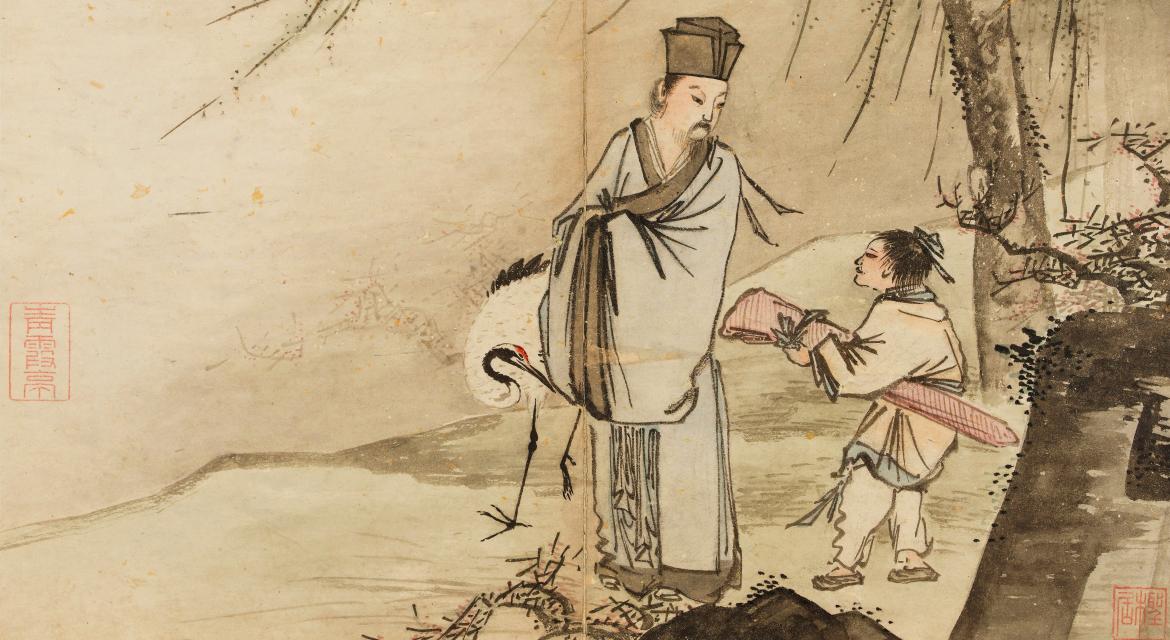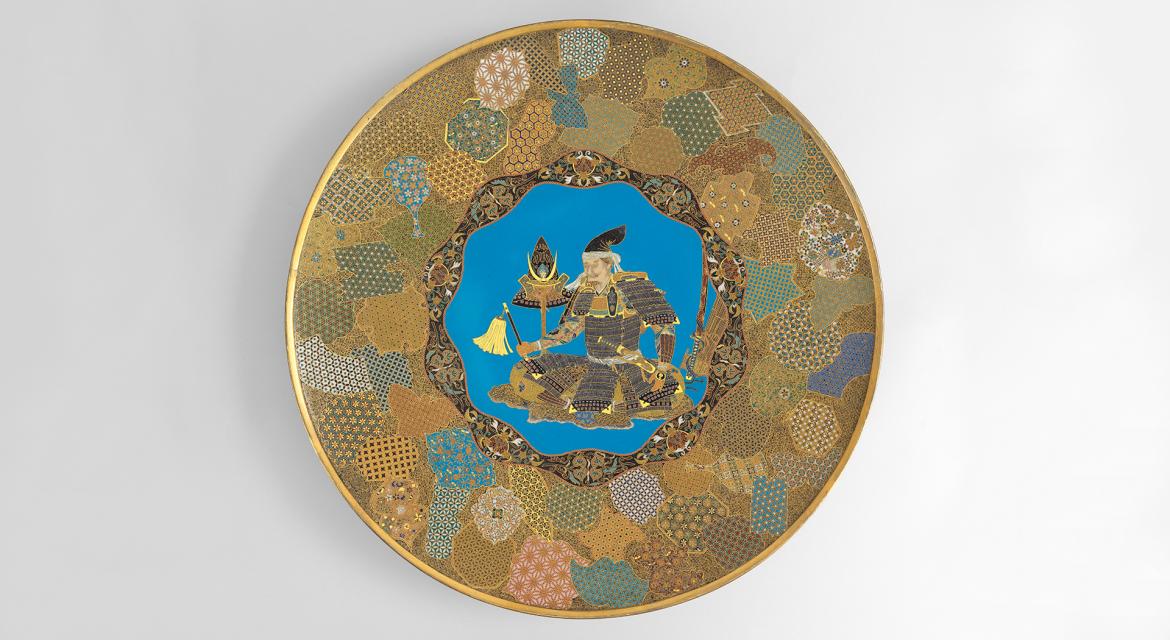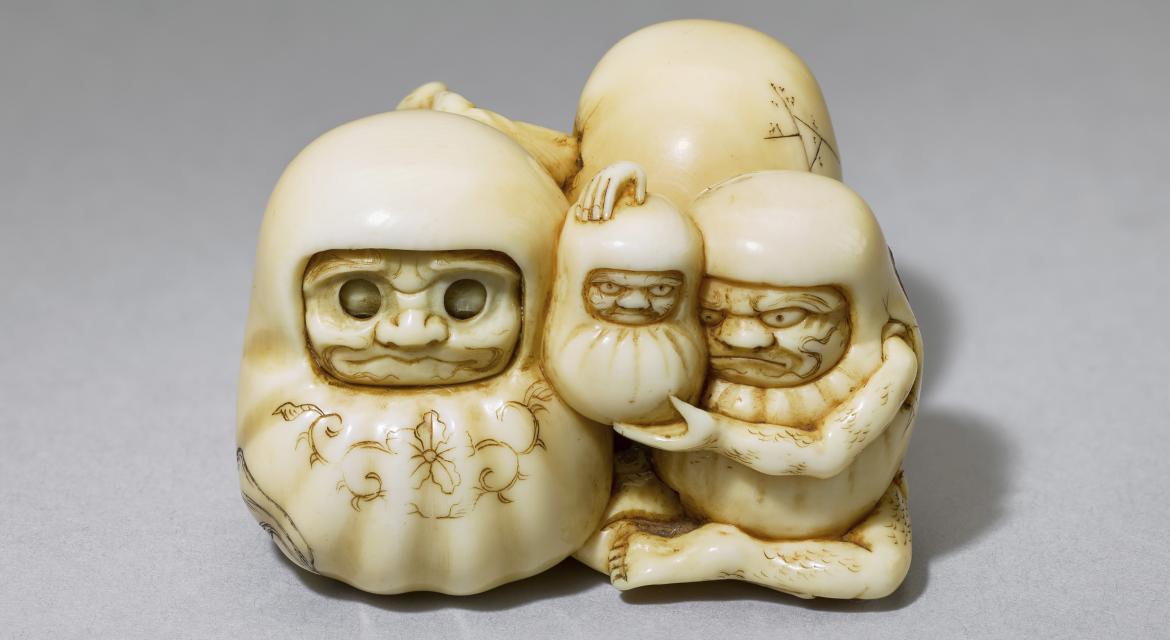Return from Asia
Henri Cernuschi, a collector in the age of Japonisme
6 October 2023 to 4 February 2024
The Return from Asia exhibition, presented from October 6, 2023 to February 4, 2024, invites visitors to follow in the footsteps of Henri Cernuschi, from his journey to the Far East through to his return to Paris, where he created one of the first museums of Asian art.
This exhibition, offered on the occasion of the 150th anniversary celebration of Henri Cernuschi’s return from Asia, invites audiences to discover or rediscover the itinerary of the traveller and collector, whose original contribution enabled the revolution of taste known as Japonisme to take hold in Europe.
From Tuesday to Sunday, 10am to 6pm, except for some public holidays
(ticket office closes at 5:30pm).
Full price: €10
Reduced price: €8
Free for holders of the Paris Musées pass, for under 18s, for the disabled and their carers.
Free access to the permanent collections.
The discoveries and numerous acquisitions by Henri Cernuschi (1821-1896) undertaken throughout his extensive travels from Japan, China, to Indonesia, Ceylon, and India were to encourage him to constitute one of the largest European collections of Asian art of its time and to found the museum that bears his name, whose influence continues to this day.
From 1871 to 1873, there were over 5,000 artworks – bronzes, ceramics, paintings, prints and etchings, objects in lacquered and sculpted wood, photographs or illustrated books – that crossed oceans, as far as Paris. The Chinese and Japanese art objects that he brought together immediately exerted fascination on the artists and artisans of the period, and became models for a whole generation of creative artists in Europe.
At the same time, Cernuschi completed his work by creating a unique setting for his collection. His museum, designed as a temple of Asian arts, became a high place of Parisian Japonisme…

Edo period (1603-1868), late 17th century, Japan
Ink, colour and gold on paper
H.22.5 cm; L.16 cm
M.C. 4738
Henri Cernuschi bequest, 1896
© Paris Musées / Musée Cernuschi
An Exhibition Tour in 3 Parts
-
First Part: The Journey to Asia

End of Edo period (1603-1868), 19th century, Japan
Bronze
H.78.5 cm; L.34 cm
M.C. 1663
Henri Cernuschi bequest, 1896
© Paris Musées / Musée Cernuschi

Edo period (1603-1868), late 17th century, Japan
Ink, colour and gold on paper
H.30 cm; L.22.5 cm
M.C. 4740
Henri Cernuschi bequest, 1896
© Paris Musées / Musée Cernuschi
The same year that Jules Verne published Around the World in Eighty Days, Henri Cernuschi discovered Asia, with his ultimate aim being that of a world tour, accompanied by Théodore Duret (1838-1927), a French art critic, also a “compagnon de route” to the impressionists, a journalist, and a writer. After travelling across the American continent and the Pacific Ocean, Henri Cernuschi headed to Japan, then China, Indonesia, Ceylon, and India. The collector was struck by the rich artistic diversity of the countries he visited. Throughout his stay in Asia from October 1871 to December 1872, Henri Cernuschi acquired several thousands of objects at Japanese and Chinese art markets, particularly bronzes of which he was the first Westerner to grasp their value; but also ceramics, prints, illustrated books, paintings, photographs, and lacquered and carved wooden objects.
This journey gave rise to one of the largest and finest collections of Asian art in Europe. This is illustrated in the first section of the exhibition, through the presentation of a selection of Japanese and Chinese masterpieces from the Cernuschi collection.

Ming Dynasty (1368–1644), 15th-16th century, China
Ink and colour on paper
H.38.6 cm; L.53.55 cm
M.C. 4655
Henri Cernuschi bequest, 1896
© Paris Musées / Musée Cernuschi

Ming Dynasty (1368–1644), 15th century, China
Gilded bronze
H.77.4 cm; L.57 cm; D.26.6 cm
M.C. 519
Henri Cernuschi bequest, 1896
© Paris Musées / Musée Cernuschi

Western Zhou Dynasty (circa 1050 and 771 BCE), end of the 11th century or beginning of the 10th century BCE, China
Bronze
H.49.7 cm; L.34.5 cm
M.C. 440
Henri Cernuschi bequest, 1896
© Paris Musées / Musée Cernuschi
-
Second Part: The Return to Paris
Back in Paris, Henri Cernuschi immediately exhibited his treasures for the public. A great deal of objects from his collection were presented for public events such as the 1873 exhibition at the palais de l’Industrie, the retrospective exhibition of metal in 1880 and the retrospective exhibition of Japanese art in 1883. His Chinese and Japanese artworks were soon perceived as extraordinary sources of inspiration by the artists and artisans of the day like Gustave Moreau (1826-1898) or Émile Reiber (1826-1893), director of the drawing studios of the house of Christofle. The repertoire of forms and motifs, and the technical innovation of the pieces of the Cernuschi collection became models for an entire generation of creative artists.
This considerable influence was to extend through to the early decades of the 20th century, as demonstrated by the production of animal sculptor François Pompon (1855-1933).

1874
Gilded copper alloy, cloisonné enamel, coloured glass cabochons
H. 39.5 cm; L. 23.4 cm; D. 14 cm
Musée d'Orsay, gift of the Société des Amis du Musée d'Orsay (SAMO), 2019
© Musée d’Orsay, Dist. RMN-Grand Palais / Patrice Schmidt

1877
Printing on paper
H. 22.4 cm; L. 13.8 cm
CERin-12°/949
Purchased, 2017
© Source gallica.bnf.fr / Bibliothèque nationale de France

End of the Edo period (1603-1868), 18th-19th century, Japan
Bronze
H. 32 cm ; L. 21,7 cm ; D. 9,2 cm
M.C. 2055
Henri Cernuschi bequest, 1896
© Paris Musées / Musée Cernuschi

Edo period (1603-1868), 1815, Japan
Ink and colour on paper
H. 36.3 cm; L. 31.5 cm; D. 12.4 cm (album)
M.C. 4765
Henri Cernuschi bequest, 1896
© Paris Musées / Musée Cernuschi

Between 1929 and 1932
Bronze
H. 52 cm; L. 23 cm; D. 18 cm
Pompon Family bequest, 1932
© Musée d’Orsay, Dist. RMN-Grand Palais / A. Morin / Gallimard
-
Third Part: The Collection and the Future Cernuschi Museum
Faithful to his visionary intuitions, Henri Cernuschi built a private mansion in 1874, designed from the outset as a museum space, in a neighbourhood recently established near the Parc Monceau. Living surrounded by his collections and hosting artists and Asian art lovers, Cernuschi made his “house-museum home” one of the high places of Japonisme until his death in 1896. He bequeathed his mansion and collections to the Ville de Paris (Paris city council), to become the musée des arts de l’Asie de la Ville de Paris, which was opened to the public in 1898.

Meiji era (1868-1912), 19th century, Japan
Cloisonné enamels on bronze
D. 54.9 cm
M.C. 5473
Legs Henri Cernuschi, 1896
© Paris Musées / Musée Cernuschi

Meiji era (1868-1912), 19th century, Japan
Cloisonné enamels on bronze
D. 54.9 cm
M.C. 5474
Legs Henri Cernuschi, 1896
© Paris Musées / Musée Cernuschi

Edo period (1603-1868), mid-19th century, Japan
Ivory
H. 2.3 cm; L. 3.3 cm; D. 3.2 cm
M.C. 11459
Henri Cernuschi bequest, 1896
© Paris Musées / Musée Cernuschi

Qing Dynasty (1644-1911), 18th century, China
Cloisonné enamels on copper
H. 104 cm; L. 82 cm
M.C. 2433
Henri Cernuschi bequest, 1896
© Paris Musées / Musée Cernuschi

End of the Edo period (1603-1868), between 1840 and 1867, Japan
Porcelain painted in cobalt blue under glaze
H. 9.5 cm; L. 55 cm
M.C. 3476
Henri Cernuschi bequest, 1896
© Paris Musées / Musée Cernuschi
Mediation Schemes
The exhibition is enhanced with audio devices in French and English: four listening posts equipped with sound cones and distributed throughout the exhibition offer visitors a real immersion thanks to the voices of actors who revive personalities close to Cernuschi:
- The first two posts will allow the public to follow Henri Cernuschi and Théodore Duret to Japan and China, by listening to excerpts from the story Voyage en Asie [Journey to Asia] written by the latter and published in 1874.
- The third post shares the impressions of Albert Jacquemart (1808-1875), an art historian, published in La Gazette des Beaux-Arts in 1873, following the exhibition of Cernuschi’s collection at the palais de l’Industrie.
- At the last listening post, Louis-Edmond Duranty (1833-1880), a novelist and art critic, evokes the home of Henri Cernuschi and the singular spirit of the place, after a visit to the collector’s home in 1880.
____________________________________________________
2023: CELEBRATION OF THE 150th ANNIVERSARY
OF HENRI CERNUSCHI'S RETURN FROM ASIA
This year – a symbolic date for the museum – marks the 150th anniversary of Henri Cernuschi’s return from Asia. Concomitantly to the retrospective exhibition Return from Asia, the permanent collections are also echoing this event with the reintegration within the collections of the Japanese sculpted dragons, a major work from the Edo period (1603-1868), and the creation of a visit designed for families.
In addition, a selection of photographs of Japan by Felice Beato (1832-1909) will be presented in the Painting Room from September 26 to December 17, 2023.
-
Restoration of the Sculpted Japanese Dragons
The museum initiated the restoration of a monumental sculpture in wood representing dragons. This element of Japanese architecture, nearly twelve metres high, featured in a prime position in the Buddha Hall, during Henri Cernuschi’s lifetime. The finesse of execution and the technical mastery of these panels attest to the absolutely remarkable yet still relatively unknown know-how of the sculptures of the Edo period (1603-1898). Placed in the storage rooms of the museum in the 1930s, the frieze of dragons had never been exhibited as a complete set for several decades now. As of this summer, this spectacular artwork has been repositioned in the heart of the museum in its original position, where visitors can admire it once again.
More info here: Reopening of the Buddha Hall and exhibition of sculpted Japanese dragons

Edo period (1603-1898), Japan
Wood
L. 12 m
© Paris Musées / Musée Cernuschi. Photo Pierre Antoine

© Paris Musées / Musée Cernuschi. Photo Pierre Antoine
-
Special Visit Adapted for Families (Ages 7 and Up)
A visit dedicated to families is indicated by specific signage within the Return from Asia exhibition and extends into the permanent collections, highlighting the major works of the Cernuschi collection, such as the bronze incense burner in the shape of a dragon by Kimura Toun or the Japanese tiger in lacquered wood that once belonged to Sarah Bernhardt.
-
Felice Beato and Japan, Photographs from the Cernuschi Collection
Exhibition in the Painting Room from September 26 to December 17, 2023
Felice Beato (1832-1909) is an Italian photographer, naturalised English, known for his war photographs and particularly for his swift technical execution. He joined the English artist Charles Wirgman (1832-1891) in Yokohama in 1863, where they both founded a photographic studio. The same year, they followed the Swiss diplomat Aimé Humbert (1819-1900) who had been sent to Japan to negotiate a treaty, which allowed them to visit Edo, the capital, closed to foreigners at this time. In addition to his landscapes views and famous places, Beato photographed genre scenes and portraits, mainly in settings reconstructed in his studio. These photographs were hand-coloured by Japanese artists since 1868, emphasizing certain details of clothing or objects. His success is notably attributed to the sale of two photographic albums in 1868: he was the first photographer to introduce this format in Japan. The Cernuschi collection contains original prints from these albums.

circa 1868
Hand-colored photographic print on albumen paper
M.C. 4621 C
Henri Cernuschi bequest, 1896
© Paris Musées / Musée Cernuschi. Photo Pierre Antoine